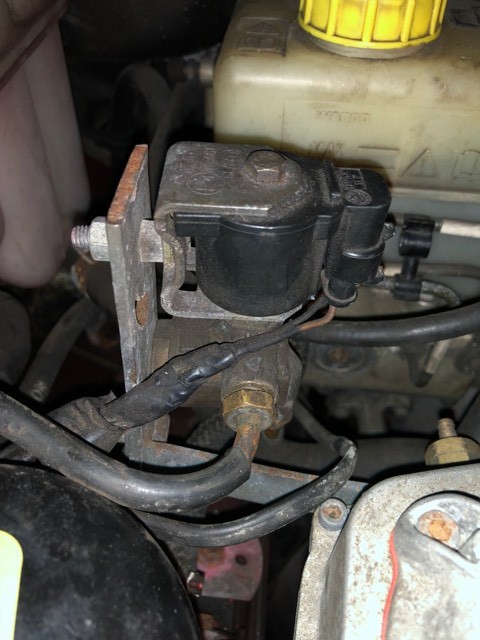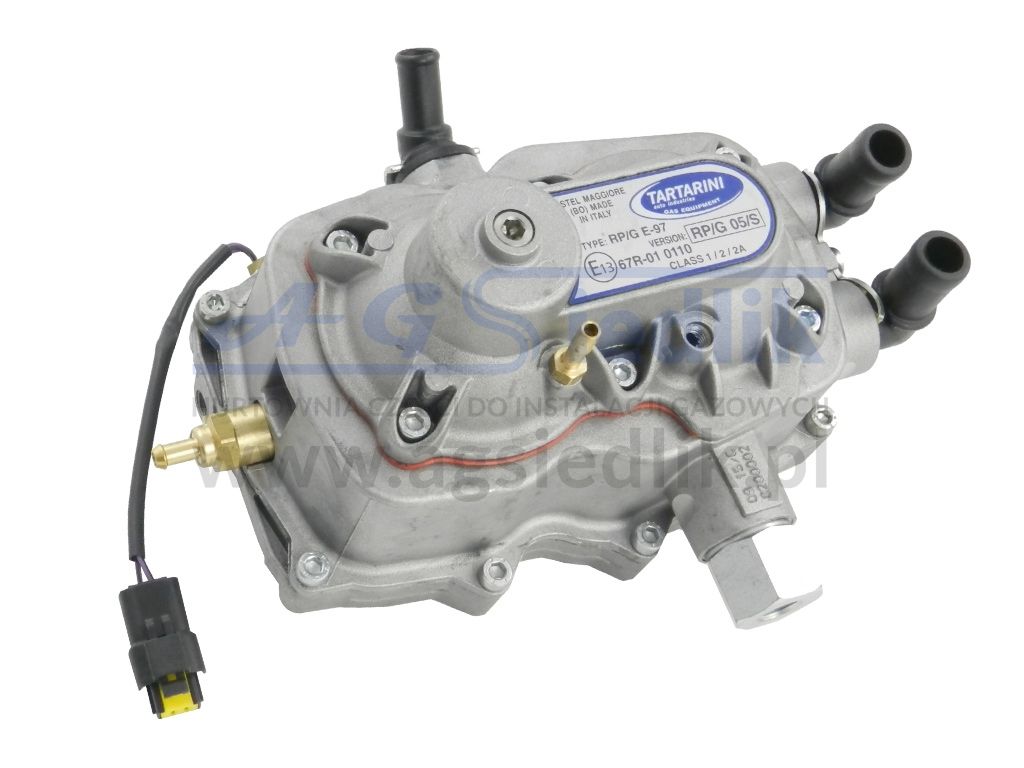I ordered a Tartarini reducer the other day as the company had one left in stock and they were doing it for a good price. That's arrived today but I'm not fitting it yet just incase it's not needed. It's nice and shiny though.
I've had a good look at the front and rear today. I can see the solenoid on the tank, there's no filter there, here's a picture of the solenoid that's fitted just before the reducer:

Looking at that, I can't tell if there's a filter in it or not, there's a brass body that sits near the bracket, if there is a filter in there it must be a tiny one, the filtered solenoid on our other LPG RR has a noticeable bowl that the filter sits in underneath it.
Since undoing all of the tension on the pressure adjusting bolt the car seems to run better, it idles fine on LPG, I can accelerate to 30 on the flat but if I try and go past half throttle or hit a slight incline you can feel it starting to choke, keeping your foot in the same place and switching back to petrol makes a notable difference in acceleration.
With the screw undone totally at idle the pressure is still sitting at 2.4 bar, when driving normally it drops to 1.6 - 2.0 bar and when you floor it, it switches back to petrol.
I put the suspension on high earlier and slid under it for another look at the pipe, I can't see any marks on it that would suggest it's been crushed.
David.
1995 4.6 HSE - Biarritz Blue - Breaker
2002 4.6 Vogue SE - Alveston Red
2007 4.2 Supercharged - Java Black
2012 4.4 TDV8 Autobiography - Baltic Blue



